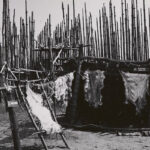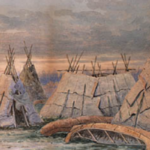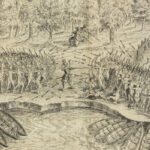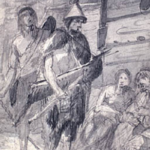The Sahtu Dene Council represents a critical pillar of Indigenous governance in the Northwest Territories. Rooted in the traditions of the Sahtu Dene people, their history reflects resilience, adaptation, and an enduring connection to the lands surrounding Great Bear Lake. From their ancient origins in the Subarctic to their modern political developments, the Sahtu Dene have woven their identity into the fabric of Canada’s North. This essay examines their prehistory, early encounters with Europeans, evolving relationships, and the establishment of the Sahtu Dene Council as a self-governing entity.
Prehistory and Arrival in the Subarctic
The ancestors of the Sahtu Dene are part of the larger Dene Nation, which traces its origins to the Athapaskan migration from Asia across the Bering Land Bridge approximately 12,000 years ago. Archaeological evidence reveals that these early peoples settled in the Subarctic region, adapting to its harsh climate by relying on caribou, fish, and other wildlife. Their subsistence patterns followed the seasonal migrations of caribou, reflecting their intimate knowledge of the environment (Greer, 1997).
The Sahtu region, centred around Great Bear Lake, played a crucial role in shaping the culture of the Sahtu Dene. The lake provided abundant fish and acted as a hub for trade and social gatherings. Oral traditions passed down through generations speak of a sacred connection to this land and water, which remain central to Sahtu Dene identity today.
First Contact with European Explorers
The Sahtu Dene’s first interactions with Europeans occurred in the late 18th century, facilitated by the expansion of the fur trade. Explorers such as Alexander Mackenzie traversed their territory, seeking routes to the Pacific. These encounters introduced European goods like metal tools, firearms, and textiles, which the Dene incorporated into their traditional practices. However, these exchanges were not without consequences.
European-introduced diseases, including smallpox and influenza, devastated Indigenous populations across the Subarctic. The Sahtu Dene suffered significant losses, which disrupted their social structures and forced them to adapt to the rapid changes brought by contact with settlers (Kristensen & Davis, 2015).
Relationships with Traders and Missionaries
The establishment of trading posts in the Northwest Territories deepened the relationship between the Sahtu Dene and Europeans. Great Bear Lake became a centre for fur trading, where the Dene exchanged pelts for goods. While these exchanges were economically beneficial, they also altered traditional patterns of resource use and dependency.
Missionaries followed traders, seeking to convert the Sahtu Dene to Christianity. These efforts often clashed with Indigenous spiritual practices, though many Dene communities blended Christian teachings with their traditional beliefs. The adaptability of the Sahtu Dene in integrating new ideas while preserving their cultural identity is a testament to their resilience (Maracle et al., 2018).
Modern Challenges and Political Awakening
The 20th century brought profound challenges to the Sahtu Dene. Government policies aimed at assimilation, including residential schools, forcibly removed children from their families and sought to suppress Indigenous languages and traditions. These policies left a legacy of trauma that continues to affect Sahtu Dene communities.
In the latter half of the century, the Sahtu Dene began mobilizing to assert their rights and protect their lands. The Mackenzie Valley Pipeline Inquiry in the 1970s marked a turning point. Led by Justice Thomas Berger, the inquiry highlighted the Dene’s concerns about resource development and its impact on their way of life. The Sahtu Dene played a key role in shaping the conversation around Indigenous consultation and environmental stewardship (Sandlos & Keeling, 2021).
Establishment of the Sahtu Dene Council
In 1993, the Sahtu Dene and Métis Comprehensive Land Claim Agreement was signed, granting the Sahtu Dene significant land rights and self-governance. This agreement marked a historic milestone, as it secured ownership of over 41,000 square kilometers of land and established a framework for the Sahtu Dene Council to manage their affairs (Maracle et al., 2018).
The Sahtu Dene Council oversees cultural programs, environmental stewardship, and economic development initiatives. Its governance structure is rooted in traditional Dene values, ensuring that decisions reflect the collective interests of the community. This balance of tradition and modern governance has allowed the Sahtu Dene to navigate contemporary challenges while preserving their cultural identity.
Contemporary Sahtu Dene Society
Today, the Sahtu Dene Council is a model of Indigenous governance. Language revitalization and cultural education are central to their mission, with programs aimed at reconnecting younger generations with their heritage. Traditional knowledge is integrated into governance, particularly in environmental stewardship efforts.
The Sahtu Dene have been leaders in advocating for the protection of Great Bear Lake and its surrounding ecosystems. Collaborating with researchers and policymakers, the council emphasizes sustainable development and the preservation of traditional hunting and fishing practices. Their stewardship efforts have gained international recognition, highlighting the importance of Indigenous knowledge in addressing global environmental challenges (Fafard, 2006).
Economic development initiatives led by the Sahtu Dene Council focus on tourism, renewable energy, and resource management. These projects are designed to provide long-term benefits to the community while respecting the land and its cultural significance.
Conclusion
The history of the Sahtu Dene Council reflects the resilience and adaptability of the Sahtu Dene people. From their ancient roots in the Subarctic to their encounters with European settlers and their emergence as leaders in self-governance, the Sahtu Dene have navigated immense challenges while preserving their cultural identity. Their story is a testament to the strength of Indigenous communities and their vital role in shaping Canada’s history and future.
References
- Fafard, M. (2006). Canadian Heritage, Indigenous Heritage: Places, Meaning and Management. University of Alberta.
- Greer, S. C. (1997). Traditional Knowledge and Archaeology in Subarctic Landscapes. Canadian Anthropological Journal.
- Kristensen, T. J., & Davis, R. (2015). Indigenous Adaptations and Resilience in the Subarctic. Routledge.
- Maracle, T. J., Tetlichi, G., & Kassi, N. (2018). Environmental Justice and Indigenous Land Claims. De Gruyter.
- Sandlos, J., & Keeling, A. (2021). Mining Country: A History of Canada’s Mines and Miners. UBC Press.



